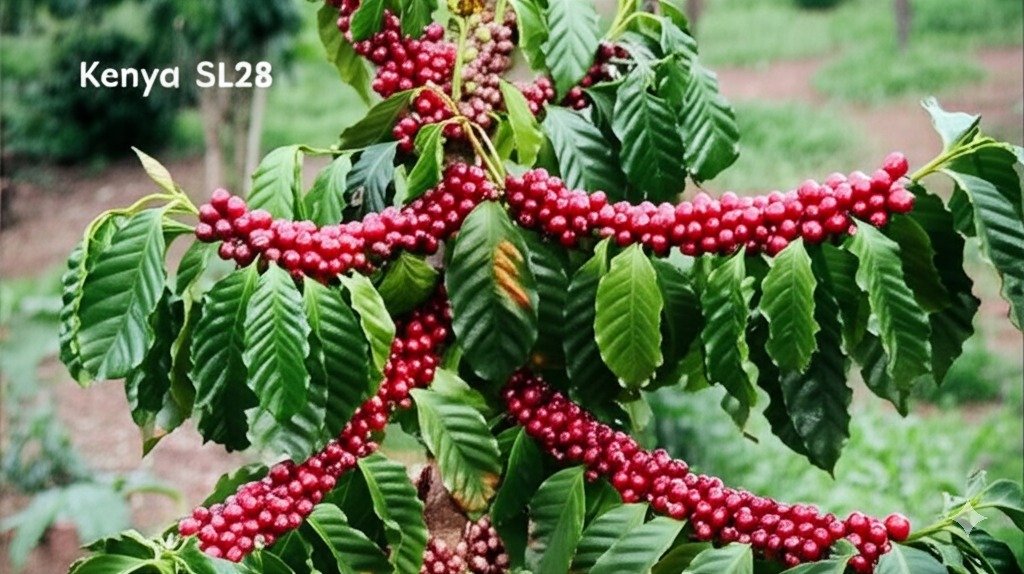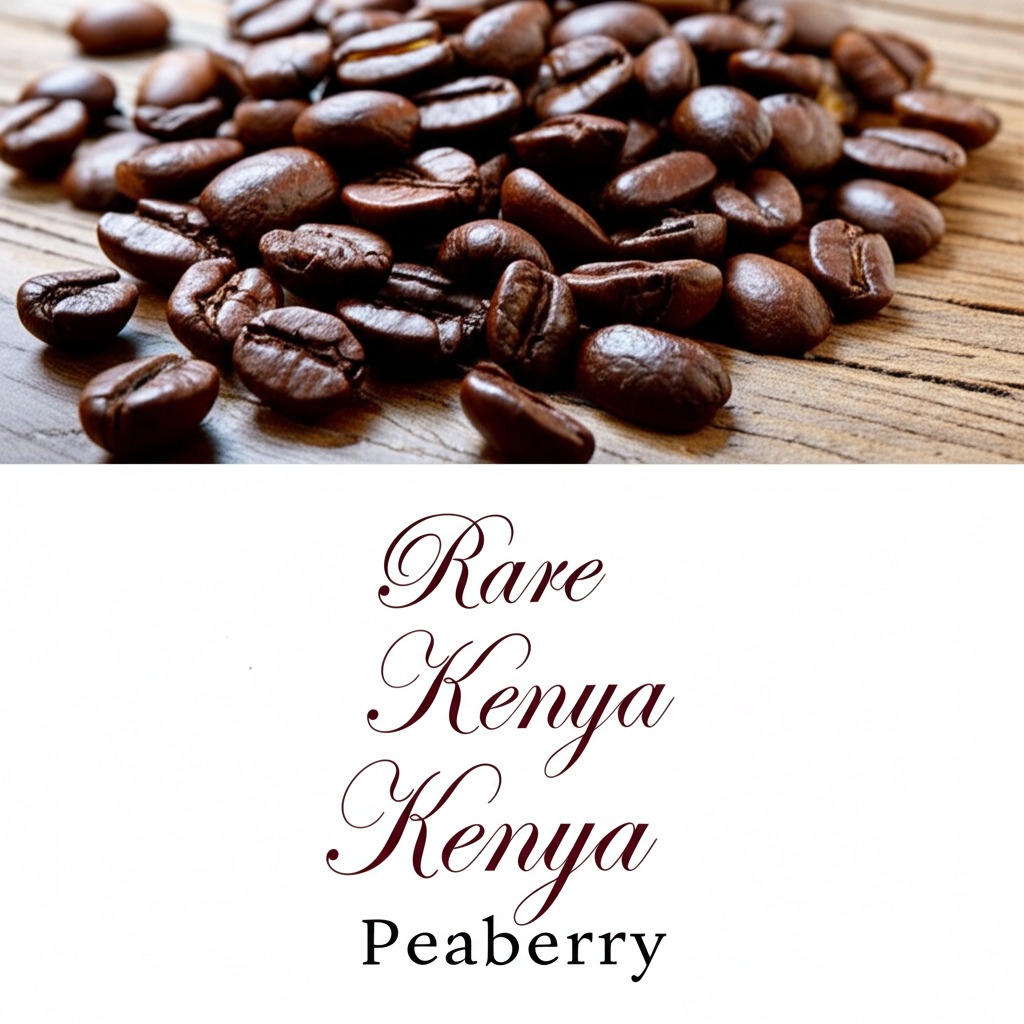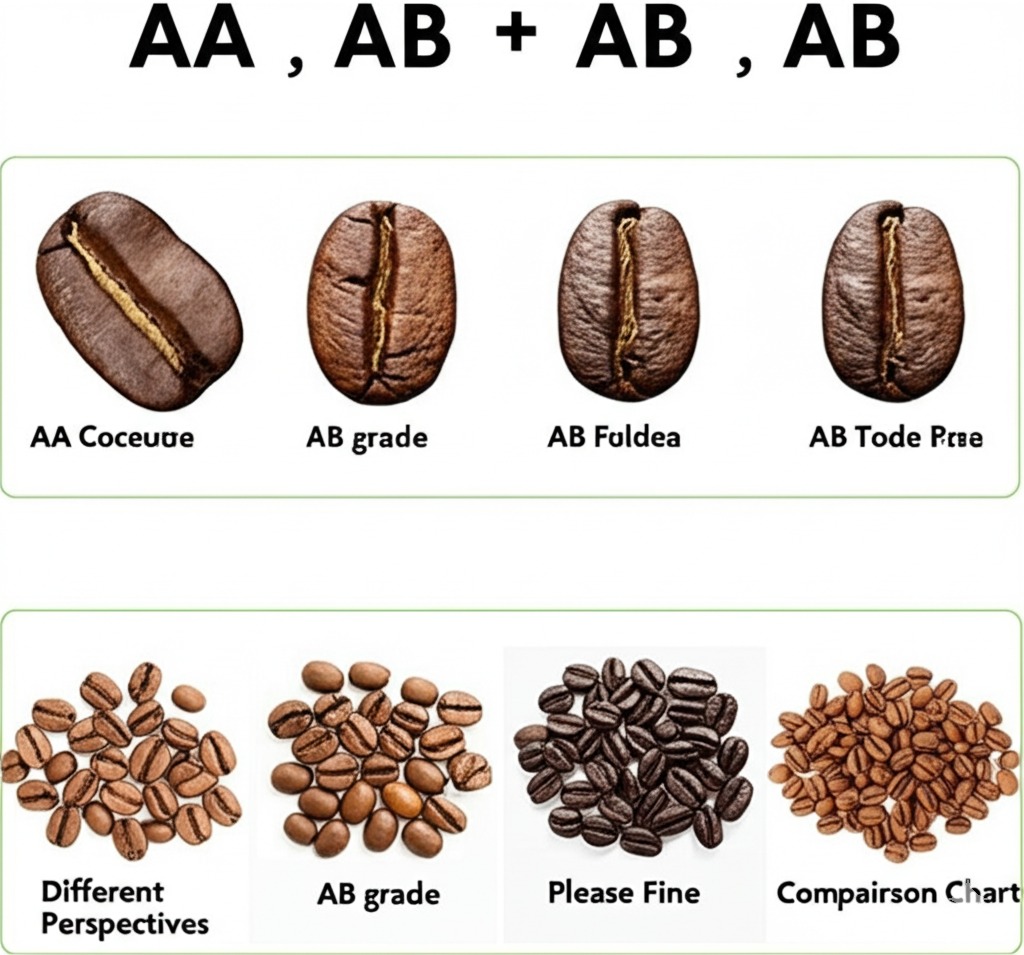Quels sont les 10 cafés kenyans que vous devez essayer?
Kenyan coffee often disappoints with inconsistent quality and confusing options. I've wasted money on subpar beans that promised excellence but delivered mediocrity.
Kenya produces some of the world's best coffee, known for bright acidity and fruity notes. The top Kenyan coffees come from regions like Nyeri, Kirinyaga, and Mt. Kenya, with beans graded AA, AB, or PB based on size and quality.

When I first visited Kenya's coffee farms, I was amazed by the care taken at every step. From selective hand-picking to meticulous processing, Kenyan farmers treat coffee as an art form. Let me share the 10 best Kenyan coffees I've discovered through years of tasting and working with local producers.
What Makes Kenyan AA Coffee So Special?
Kenya AA coffee often costs more than other varieties. Many coffee lovers wonder if the premium price actually delivers superior taste or if it's just clever marketing.
Kenya AA represents the highest grade of Kenyan coffee, featuring large beans (screen size 17/18) with intense flavor complexity. These beans grow at high altitudes (1,700-1,800 meters) where slower maturation develops concentrated sugars, creating bright acidity with blackcurrant, citrus, and wine-like notes.

When I first encountered Kenya AA coffee, I was struck by its remarkable balance of sweetness and acidity. The grading system in Kenya is primarily size-based, but there's more to the story. AA beans aren't just physically larger - they typically come from the center of the coffee cherry where nutrient concentration is highest. This results in more complex flavor development during roasting.
The best Kenya AA coffees come from specific regions like Nyeri and Kirinyaga, where volcanic soils and ideal microclimates create distinctive flavor profiles. Some notable AA varieties include "Kenya AA Nyeri" with its blackcurrant and citrus notes, and "Kenya AA Kirinyaga" known for more floral and berry characteristics.
What many don't realize is that proper brewing is essential to experience Kenya AA's full potential. I recommend pour-over methods at 200-205°F with a medium-fine grind to extract the perfect balance of acidity and sweetness that makes these beans world-renowned.
Why Is Kenya SL28 Considered Among The Best Coffee Varieties?
Coffee enthusiasts often find Kenya's variety names confusing. SL28 sounds like a scientific code rather than a premium coffee, leaving many wondering what makes it special.
Kenya SL28 is a coffee variety developed by Scott Laboratories in the 1930s, prized for exceptional drought resistance and distinctive flavor profile. It produces beans with complex acidity, pronounced sweetness, and notable blackcurrant, wine, and tropical fruit notes that have become hallmarks of premium Kenyan coffee.

The story behind SL28 fascinates me as much as its flavor. This variety wasn't created by accident - it was specifically selected for Kenya's growing conditions from Bourbon lineage coffee plants. What makes SL28 truly special is its remarkable genetic stability over generations, continuing to produce exceptional beans despite changing climate conditions.
When properly cultivated, SL28 develops higher concentrations of certain flavor compounds than almost any other coffee variety. The beans contain elevated levels of phosphoric acid, which creates that signature "Kenyan brightness" that coffee professionals immediately recognize.
The most exceptional SL28 coffees I've encountered come from small farms in Central Kenya, particularly those at elevations between 1,700-1,900 meters. At these altitudes, the temperature variation between day and night stresses the plants just enough to enhance sugar development without compromising yield.
Here's what makes Kenya SL28 truly special compared to other varieties:
| Caractéristiques | Kenya SL28 | Typical Coffee Varieties |
|---|---|---|
| Acidity | Bright, wine-like | Moderate to low |
| Body | Medium with silky texture | Variable |
| Flavor Notes | Blackcurrant, grapefruit, wine | Less complex fruit notes |
| Sweetness | Pronounced | Moderate |
| Aftertaste | Long, clean | Often shorter |
Where Can You Find Authentic Kenya Peaberry Coffee?
Many coffee sellers claim to offer Kenya Peaberry, but quality varies dramatically. Coffee lovers often overpay for mediocre beans marketed as premium peaberries.
Kenya Peaberry is a natural mutation where the coffee cherry develops a single round bean instead of two flat beans. These represent only about 5-10% of any harvest and are separated during sorting. True Kenya Peaberries offer concentrated flavors with bright citrus acidity and notes of blackberry, chocolate, and spice.

My journey to find authentic Kenya Peaberry led me to small-scale farmers in Kenya's central highlands. What makes peaberries unique isn't just their rounded shape – it's the concentration of flavors that occurs when all the plant's energy goes into a single bean rather than splitting between two.
Finding genuine Kenya Peaberry requires looking beyond mainstream coffee retailers. The best sources are specialty coffee roasters who maintain direct relationships with Kenyan cooperatives and estates. Companies like Counter Culture, Intelligentsia, and Blue Bottle occasionally offer limited releases of Kenya Peaberry when available.
What differentiates authentic peaberry from regular coffee is noticeable in the cup. The increased density of peaberries means they roast differently than flat beans, developing more complex sugar caramelization. When I taste true Kenya Peaberry, I immediately notice a more pronounced sweetness balanced against that classic Kenyan acidity.
The rarity of peaberries creates challenges in the supply chain. Since they must be separated by hand or using special sorting machines, the labor cost increases significantly. This explains the premium price, but also creates opportunities for misrepresentation in the market. I recommend purchasing only from roasters who can specify the exact region, cooperative, or estate where their peaberries originated.
How Does Kenya AB Coffee Compare To AA Grade?
Coffee buyers often assume AA is always better than AB grade, but the price difference makes many wonder if AB might offer better value for everyday drinking.
Kenya AB coffee beans are slightly smaller than AA (screen size 15/16 vs. 17/18) but come from the same crops and processing. AB beans often deliver comparable flavor profiles with bright acidity and fruit notes at a more accessible price point. Many coffee professionals actually prefer certain AB lots for their balanced flavor concentration.

During my visits to Kenyan coffee auctions, I've observed something fascinating about the AB grade beans that many consumers don't realize. While size is the primary differentiator between AA and AB, the density and moisture content of the beans can be nearly identical. This means that the fundamental quality potential is often remarkably similar.
The sorting process in Kenya is exceptionally rigorous compared to many other coffee-producing countries. After harvest, beans pass through multiple screens to separate them by size. What's interesting is that beans from the same tree, same farm, and same processing batch get separated purely based on this size characteristic. The larger beans become AA, while the slightly smaller ones become AB.
In blind tastings I've conducted with both professional baristas and casual coffee drinkers, many people actually preferred certain AB lots over their AA counterparts from the same regions. The reasons varied, but often centered around balance and approachability. While AA beans sometimes showcase more pronounced individual flavor notes, AB beans can present a more harmonious overall profile.
Here's a practical comparison based on my experience with recent harvests:
| Caractéristiques | Kenya AA | Kenya AB |
|---|---|---|
| Prime de prix | 15-25% higher | Plus abordable |
| Acidity | Very bright | Bright but balanced |
| Complexity | Highly complex | Moderately complex |
| Body | Medium | Medium to full |
| Consistency | Varies by lot | Often more consistent |
| Disponibilité | Limited | More widely available |
What Makes Mt. Kenya Coffee Distinct From Other Regions?
With so many regions producing Kenyan coffee, it's hard to know which areas truly create distinctive beans. Mt. Kenya coffees command premium prices, but many wonder if the mountain terroir actually creates meaningful differences.
Mt. Kenya coffee grows at elevations between 1,700-2,100 meters on rich volcanic soils with consistent rainfall patterns. This environment creates beans with exceptional complexity, featuring bright blackcurrant acidity balanced with caramel sweetness and floral aromatics. The distinct microclimate around the mountain produces beans that showcase Kenya's most celebrated characteristics.

My first visit to a Mt. Kenya coffee farm transformed my understanding of terroir in coffee. Standing on the volcanic slopes, I could feel the temperature drop as clouds rolled in, creating the daily cycle of warmth and coolness that coffee cherries need to develop complex sugars and acids. This unique microclimate is impossible to replicate elsewhere.
The volcanic soil on Mt. Kenya contains a perfect balance of minerals including potassium, magnesium, and calcium that coffee plants absorb and convert into flavor precursors. During cupping sessions with beans from various elevations on the mountain, I've noticed that farms between 1,800-1,900 meters often produce the most balanced cups, with enough altitude to slow berry development but not so high that acidity becomes overwhelming.
Water quality also plays a crucial role in Mt. Kenya's coffee distinctiveness. The natural filtration through volcanic rock creates mineral-rich water with ideal pH levels for coffee processing. When farmers use this same water for washing and fermentation, it contributes to the clean, bright cup profile that makes these coffees stand out at international competitions.
The coffee varieties grown around Mt. Kenya are predominantly SL28 and SL34, with some farms maintaining older Bourbon and Kent varieties. This genetic diversity within farms creates resilience against disease and contributes to cup complexity. One particular farm I visited maintained separate processing for each variety, allowing me to taste the subtle differences even within the same microregion.
Conclusion
After exploring Kenya's remarkable coffee landscape, it's clear these 10 exceptional coffees showcase the country's perfect combination of ideal growing conditions, meticulous processing, and distinctive varieties. I encourage you to experience these unique Kenyan coffees yourself.
